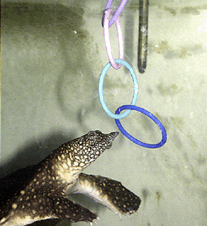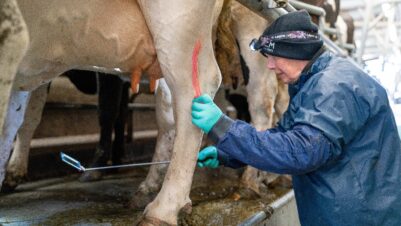THROUGH compulsory national eradication programmes, many European countries including Scotland and Ireland have made great progress towards eradicating BVD.
England has no such scheme but individuals and regional groups are nonetheless working towards becoming BVD-free as it is not something the cattle industry can afford to ignore.
Bio-Genesys Ltd, based in Ludlow, Shropshire, offers reproductive and diagnostic solutions for professional farming operations and veterinary practitioners across the UK. The company is currently launching a BVD testing service, soon to be followed by a BVD Multiplex test that will test for up to nine different diseases from just one sample.
What is BVD?
Bovine viral diarrhoea (BVD) is caused by an RNA virus called a Pestivirus. Unlike the name suggests, diarrhoea is not always a major symptom of the disease. In fact, farmers may not know that their herd is infected as there are often no obvious clinical signs.
According to a survey by the RVC, BVD has been rated by both farmers and vets as by far the most important endemic viral infection in cattle.
BVD affects immunity: cattle with the disease are more susceptible to respiratory and infectious diseases. Sick calves respond poorly to veterinary treatment and are more prone to scour, pneumonia and mucosal disease, which is fatal.
BVD affects fertility: infected herds see an increased barren cow rate and more unexplained abortions than normal.
If the animal is infected in the first 0-1 months of pregnancy, it is likely to cause early embryonic death. In 1-6 months it can lead to foetal death, abortion and mummification. If infected in the last trimester, in some cases the calf is able to convert to sero-positive, but with weak immunity.
How BVD is spread
The BVD virus can cross the placenta in a pregnant cow and cause foetal infection, so it is spread from infected dams to their unborn calves.
The dam later becomes immune to the virus but if the foetus is infected in the first trimester and doesn’t abort then the virus establishes itself in the calf, no antibodies are formed and it becomes persistently infected (PI) with the virus.
PI animals are known as “super-shedders”, i.e. they excrete the virus through their skin, urine, milk and saliva so they are highly contagious to any other cattle without immunity that they come into contact with.
These animals are the main reservoir for the virus; 1-2% of the national population have been found to be PI animals (Houe, 1999).
A significant proportion (28%) of PI animals live to two years or more, i.e. into the productive stage of their lifecycle (Booth and Brownlie, 2012) and are constantly spreading infection. A PI dam always produces PI calves.
Why should we support farms to be BVD free?
Over 90% of UK herds have or have had BVD and the disease costs the UK cattle industry almost £40 million per year (Bennett and Ijpelaar, 2003), more than leptospirosis, Johne’s disease or IBK. In a 100-cow suckler herd the estimated economic loss is about £37 per cow per year.
Respiratory and enteric infections can be much worse in animals which also have BVD.
When PIs are culled from a herd the incidence of these infections decreases, young calves are generally healthier and farmers thus have to administer less medication.
How can farmers protect their herd from BVD?
Good vaccines exist but they must be used correctly and dams must be properly protected before they go into pregnancy. RNA viruses are also more likely to mutate, so variations in the virus continue to arise.
There are tests that establish the immune status of dams but not of the calves they are carrying so farmers buying in-calf cows into their herd could be at risk of infecting a herd.
The best way of controlling and eradicating BVD is by diagnostic testing for the disease and subsequent culling of PI animals from the herd.
The virus does not survive well in the environment or other species, so PI cattle are the main reservoir for spreading the virus.
It is estimated that on average only 0.3%-3% of a herd is PI so the cost of removing them is far outweighed by the economic advantages gained by removing the source of contagion.
The first step in controlling BVD is education and vets are often best placed to provide information to farmers, so make sure your customers are informed and you are discussing BVD freedom strategies with them.











